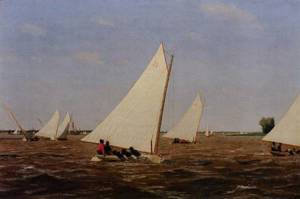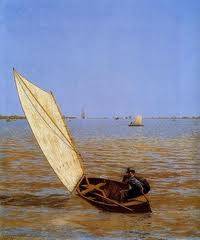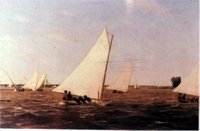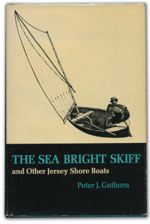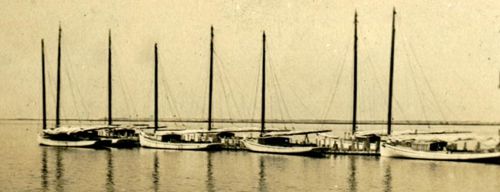History
|
|||||||||
|---|---|---|---|---|---|---|---|---|---|
Howard Chapelle's American Small Sailing Craft is the source of most of the information that follows. If you have information to add or find something that needs editing, send your inputs to: Info@TraditionalSmallCraft.com New Jersey and the Delaware River Basin have a rich history of small craft development. Unique and some very different types of vessels evolved to handle the hunting, fishing, clamming, transporting needs under a wide range of water bodies, from the shallow waters of Barnegat Bay, through the surf off the Jersey Shore to the currents flowing on the Delaware River. The vessels started out as work boats, and over time some became racing and pleasure boats. The Melonseed for instance is still a very popular design even though it can be traced as far back as 1882! The blunt-bowed Garvey is thought to be the oldest NJ design, built in many sizes to handle tasks as varied as transporting freight, fishing, clamming or oystering. They were outfitted with lee boards or centerboards, inboard or outboard rudders and were both sailed and rowed. A very versatile craft that was easy to build, very stable and could carry a load. New Jersey Beach Skiffs or SeaBright Skiffs were designed to handle the open surf. They were 18-36' long and used various sailing rigs, loose-footed sprit sails or leg-o-mutton, the larger boats having 2 masts. The northern boats had the aft end of the garboard vertical at the sternpost allowing for better tracking. While the northern boats had a narrow bottom the southern boats had rounded sides and a wide keel. Both were cedar planked with white oak used for frames, stems, and sternposts. Delaware Gill-Net Skiff |
|||||||||
|
|||||||||

